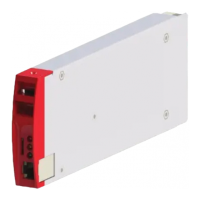16.2 Database Description
16.2.1 Typographic convention:
In this document the following naming convention will be used to represent the type of a variable:
The first letter will indicate if the variable is signed (S) or unsigned (U). Then the following digit(s) will indicate the
number of bits needed to store the variable.
Thus:
U8 will represent an unsigned variable stored in a 8-bit wide memory
U16 will represent an unsigned variable stored in a 16-bit wide memory
U32 will represent an unsigned variable stored in a 32-bit wide memory
And:
S8 will represent a signed variable stored in a 8-bit wide memory
S16 will represent a signed variable stored in a 16-bit wide memory
S32 will represent a signed variable stored in a 32-bit wide memory
What is more, Modbus RTU register base type is a 16-bit wide variable. This means it is possible to store two 8-bit
variables in a register. These two variables will be accessed using the same index in the structure. Thus in order to
know if the variable is stored in the upper byte or in the lower byte, letter H(High) or L(Low) is added to the index.
As specified by the protocol, variables longer than 8-bit are always represented in big-Endian format (MSB first).
16.2.2 Data types:
Modbus RTU protocol defines four types of variables class described in the following table
Name Type Access Supported by T2S ETH
Discrete input 1-bit wide Read-only No
Coil 1-bit wide Read-write No
Input register 16-bit wide Read-only Yes
Holding register 16-bit wide Read-write No
Data address mapping and signification are described in the following sections.
16.2.3 Supported function:
Accordingly to Modbus RTU specification, supported functions by the T2S ETH controller are the following:
Read Input registers (0x04)
78 – Monitoring T2S - ETH User Manual – v1.4
Annex 3: Modbus

